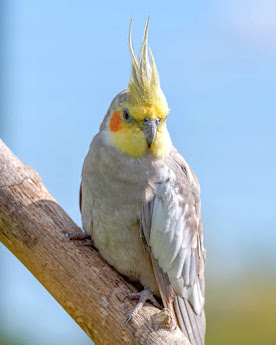Caring For Pacific Parrotlets
Even though parrotlets for sale may be small, however, they are by no means low on maintenance. They are naturally simpler to clean up in contrast to larger birds. However, they necessitate socialization and handling daily in order to keep them tame. As with all parrots, bored parrotlets can turn out to be destructive. This can include self-mutilating behavior, chewing up things around your home, or nipping people.
In order to keep
the parrots happy, it is best to give them daily attention, engaging toys,
positive reinforcement, and proper training. Parrotlets are rather good at
entertaining themselves as compared to other parrots. Provide them with an
adequate amount of stimulating toys in their cage. The minimum cage size for
this bird species should be eighteen inches square. The bigger the cage, the better.
The bar spacing should be no bigger than ½ to 5/8 inch.
Supervise the
period that the bird is out of the cage. They are so small and delicate that it
is easy to have a mishap if they are on the floor or hopping around on
furniture. In order to avert injury or mishaps, early on set boundaries for the
bird. Teach the bird to remain on a play stand. Carefully set the bird back on
it every time it gets off.
Unlike a peach fronted conure for sale, these
are pocket parrots that can often be seen poking their head out of a shirt
pocket for a quick petting on the head. This is a fun, engaging activity for
the bird. To your fine-feathered friend, your pocket is an ideal carrying pouch
that keeps it right where it would like to be - right next to you.
Diet &
Nutrition
Having a speedy
metabolism is what pacific parrotlets are known for. They must have food
available all the time. They are also recognized for their voracious appetites
and thrive on an assorted diet. Berries, fruits, seed heads, and blossoms are
what parrotlets feed on in the wild. The diet of a parrotlet should be made of
high-quality commercial pellets, small seeds, fresh vegetables and fruits safe
for birds, and nutritious protein sources such as eggs.
In addition,
they should even have access to cuttlebone as a source of calcium, especially
if a female is egg-laying. Vegetables and fruits should make up fifty percent
of the diet of a parrotlet. A high-quality bird pellet should account for 85
percent. The remaining fifteen percent should be a low-fat seed mix mainly consisting
of grass seeds, flax, cantaloupe, millet, or barley.
If you would
like to own parrotlets, keep in mind that you should be sure that you can set
aside a bird-safe area for the bird to play at least 1 or 2 hours every day. They
need to be capable of coming out of their cage, stretch their winds, and
exercise their leg muscles in order to maintain their mental and physical
health.
If you are
looking to buy a healthy parrotlet or in search of a green cheek
conure for sale, do not miss to visit Birds by
Joe!



Comments
Post a Comment